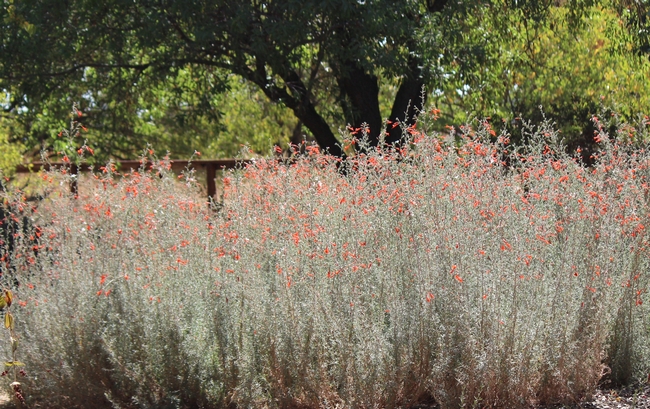As we move into the hottest, driest part of the summer, many of our gardens are looking a bit worn out. It's certainly easier to stay inside where it's cool and put garden tasks off until the fall.
But the bees are still out there doing their work to bring us food and create habitat for wildlife. What are the plant options for California gardens that will stand up to the heat with little water (all these plants are rated ‘low' in WUCOLS) and be loved by bees?
One great choice is our native California aster, Symphyotrichum chilense. Unlike asters native to the eastern US and Europe, which need regular water in California, this one thrives on low water. Shown here are the cultivars, 'Purple Haze' and 'Point St. George'.
'Purple Haze' is about 2 feet tall, while 'Point St. George' grows low to the ground. The former has deeper purple flowers than in typical for this species. Both need full sun to light shade and will spread (a lot!) to cover an area. Consider yourself warned when choosing an area to plant these in.
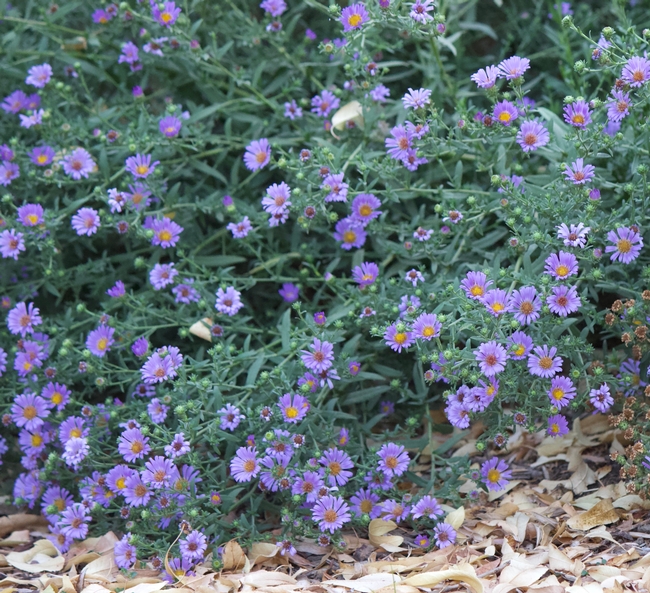
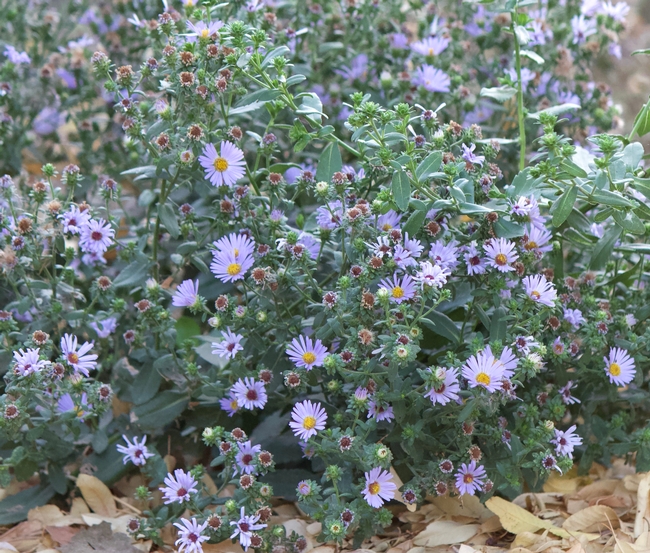
In our studies of bee plant preference at UC Davis we found our native aster to be one of the most attractive plants to California native bees. The late summer flowers are a critical source of nectar and pollen at a time when not a lot is blooming.
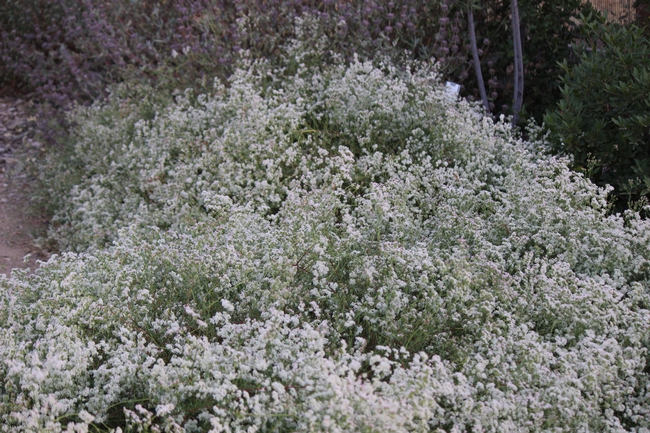
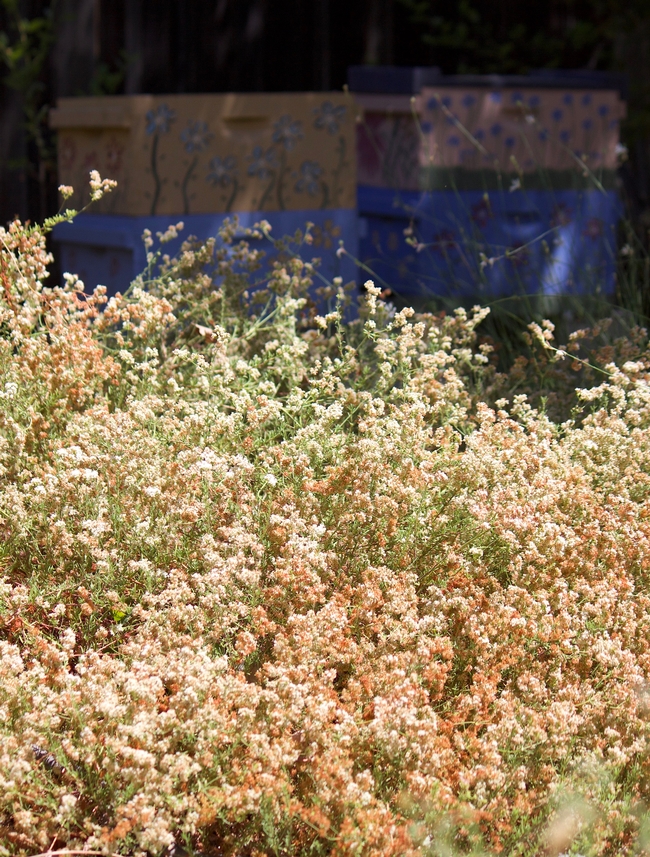
The flowers age from white to rust in later summer and provide fall color in the garden into winter.
Finally, for intense late summer color, nothing beats California fuchsia, Epilobium canum. There are numerous cultivars available, but my favorite is ‘Catalina', which reaches about 3 feet tall including flowers. California fuchsia will grow in sun or shade but blooms best in full sun. As with the aster, this plant spreads over time, making it a great filler in areas bounded by paths, buildings, or roads. These serve as barriers to keep it contained, while the plant can take the hot conditions often found in these spots.
Plant all three this fall for a show next summer!